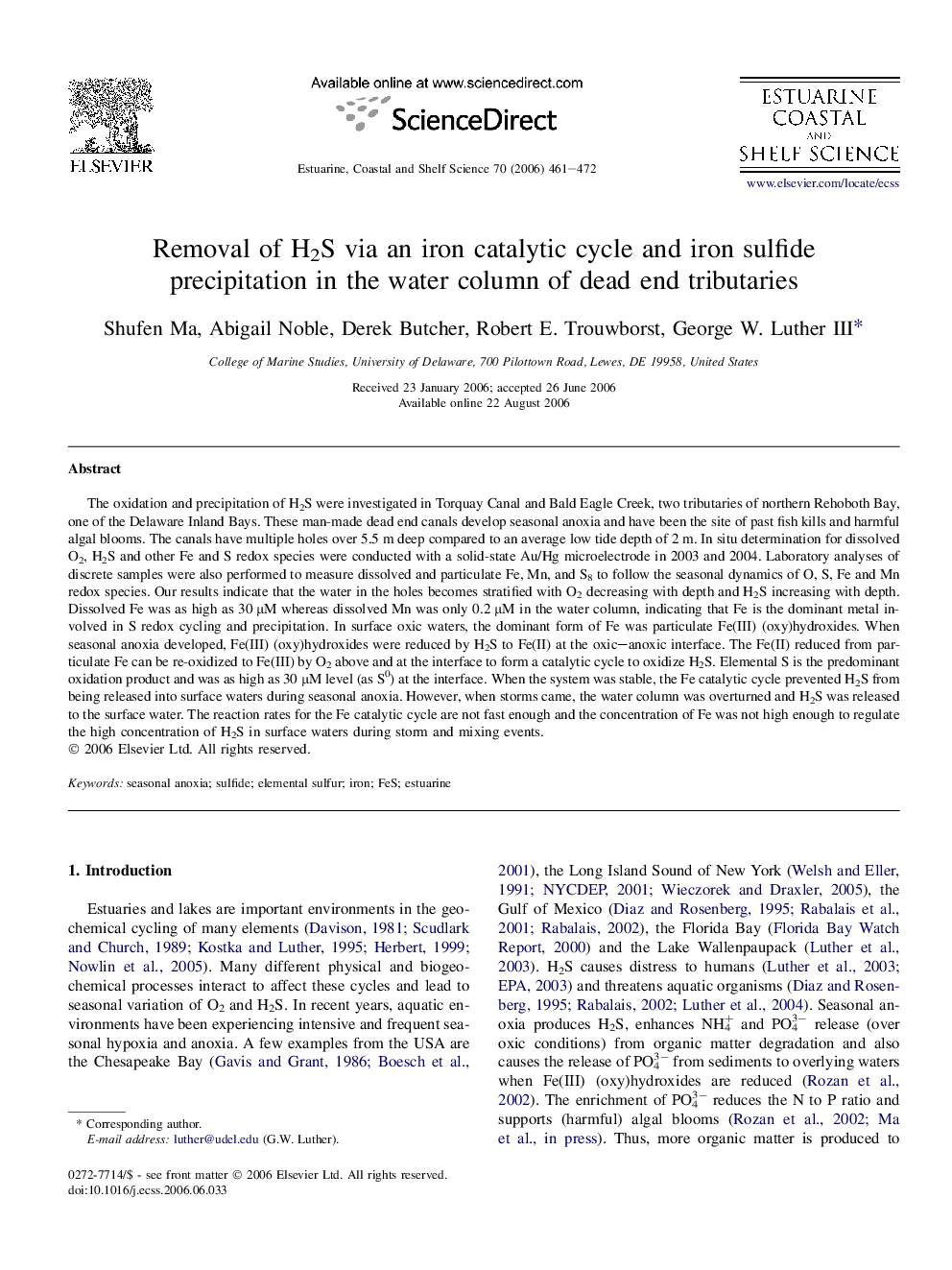| کد مقاله | کد نشریه | سال انتشار | مقاله انگلیسی | نسخه تمام متن |
|---|---|---|---|---|
| 4542184 | 1326756 | 2006 | 12 صفحه PDF | دانلود رایگان |

The oxidation and precipitation of H2S were investigated in Torquay Canal and Bald Eagle Creek, two tributaries of northern Rehoboth Bay, one of the Delaware Inland Bays. These man-made dead end canals develop seasonal anoxia and have been the site of past fish kills and harmful algal blooms. The canals have multiple holes over 5.5 m deep compared to an average low tide depth of 2 m. In situ determination for dissolved O2, H2S and other Fe and S redox species were conducted with a solid-state Au/Hg microelectrode in 2003 and 2004. Laboratory analyses of discrete samples were also performed to measure dissolved and particulate Fe, Mn, and S8 to follow the seasonal dynamics of O, S, Fe and Mn redox species. Our results indicate that the water in the holes becomes stratified with O2 decreasing with depth and H2S increasing with depth. Dissolved Fe was as high as 30 μM whereas dissolved Mn was only 0.2 μM in the water column, indicating that Fe is the dominant metal involved in S redox cycling and precipitation. In surface oxic waters, the dominant form of Fe was particulate Fe(III) (oxy)hydroxides. When seasonal anoxia developed, Fe(III) (oxy)hydroxides were reduced by H2S to Fe(II) at the oxic–anoxic interface. The Fe(II) reduced from particulate Fe can be re-oxidized to Fe(III) by O2 above and at the interface to form a catalytic cycle to oxidize H2S. Elemental S is the predominant oxidation product and was as high as 30 μM level (as S0) at the interface. When the system was stable, the Fe catalytic cycle prevented H2S from being released into surface waters during seasonal anoxia. However, when storms came, the water column was overturned and H2S was released to the surface water. The reaction rates for the Fe catalytic cycle are not fast enough and the concentration of Fe was not high enough to regulate the high concentration of H2S in surface waters during storm and mixing events.
Journal: Estuarine, Coastal and Shelf Science - Volume 70, Issue 3, November 2006, Pages 461–472